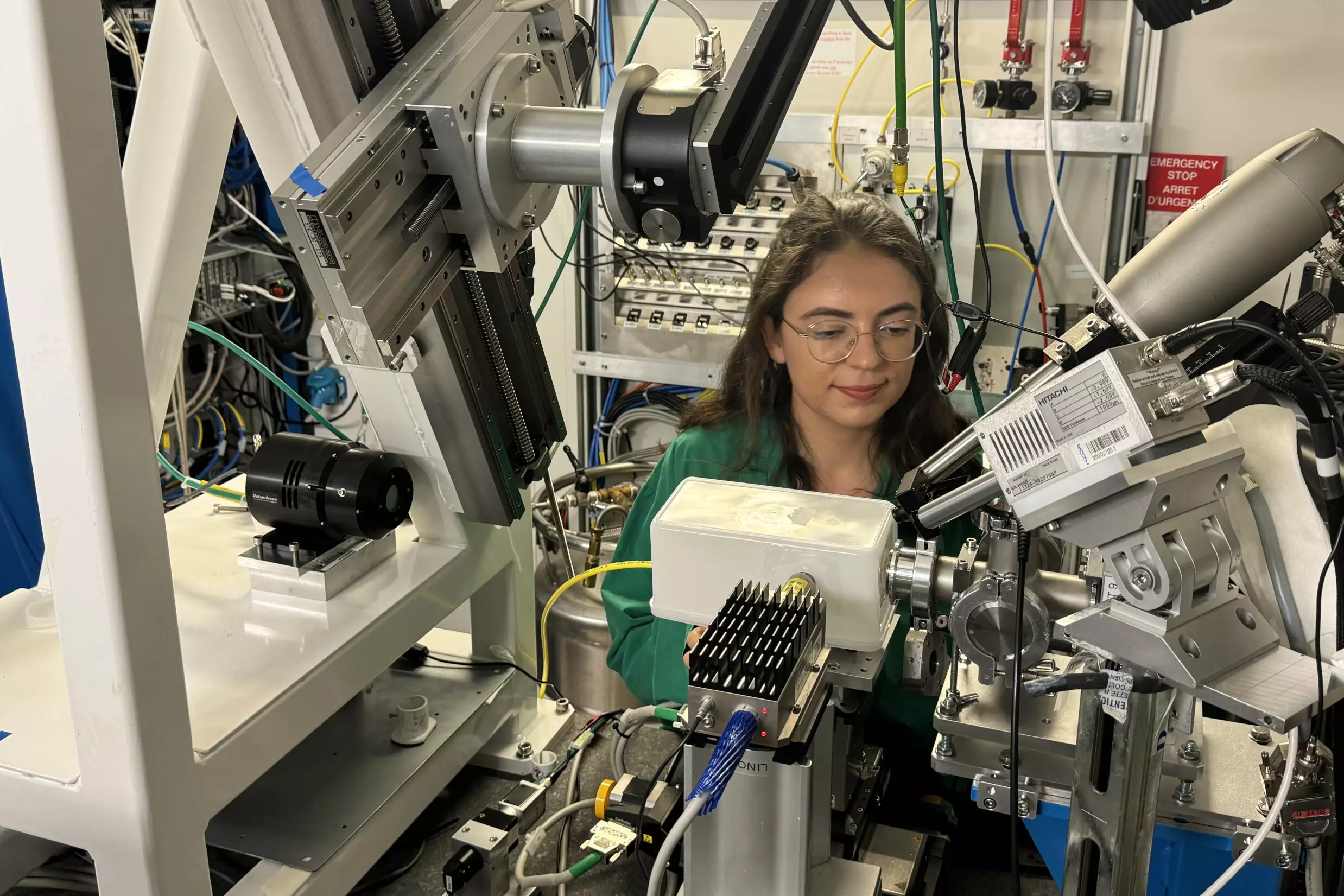Uranium, classified among the actinide series in the periodic table, has long captivated chemists and physicists alike due to its intricate chemistry and multifaceted bonding properties. Recognized predominantly for its radioactive nature, uranium also features a rich electron structure that leads to an array of oxidation states. Recent research, conducted by a global team of scientists at the Helmholtz-Zentrum Dresden-Rossendorf (HZDR), has shed new light on low-valent uranium compounds, explored utilizing advanced synchrotron techniques. In a pivotal study published in *Nature Communications*, these researchers examined the unique behaviors of uranium, notably focusing on its often-overlooked 5f electrons.
Conducting research on such a radioactive and chemically complex element requires a specialized approach, which the researchers found at the European Synchrotron Radiation Facility (ESRF) in Grenoble, France. Their use of synchrotron light at the Rossendorf Beamline (ROBL) enabled them to delve into the peculiar properties of low-valent uranium, a classification that includes elements with different electron configurations compared to more common uranium forms. Ph.D. student Clara Silva articulated the challenge, indicating that low-valent uranium houses a peculiar electron arrangement, significantly affecting its chemical characteristics.
To elucidate these characteristics, the scientists employed resonant inelastic X-ray scattering (RIXS), a sophisticated method that measures energy loss as X-rays interact with uranium samples. This delicate process yields critical insights into the electronic structures of materials, particularly the behavior of 5f electrons that are essential to bonding phenomena. Additionally, the team enriched their findings with the High-Energy Resolution Fluorescence Detection-X-ray Absorption Near Edge Structure (HERFD-XANES) technique, offering a detailed view of the electronic states near uranium’s absorption edges.
One of the standout revelations from this research was the ability to directly identify the trivalent oxidation state of uranium—referred to as U(III). The researchers uncovered how uranium atoms engage with different elements, such as fluorine and chlorine, through intricate bonding mechanisms. This critical finding, which took fifteen years to achieve, changes the landscape of understanding actinide bonding. As outlined by Prof. Kristina Kvashnina, head of the ROBL and an influential figure in this research, these results illuminate the responsiveness of 5f electrons to environmental changes, providing deeper insights into uranium’s complex chemical nature.
Troublingly, low-valent uranium compounds are more unstable than their higher valence counterparts, causing significant challenges during experimentation. The team undertook this research under strictly controlled, anoxic conditions—effectively isolating uranium from oxygen—and also conducted experiments at extremely low temperatures to maintain sample integrity. The requirement for sophisticated theoretical modeling further stressed the study’s complexity, as researchers sought pathways to accurately describe the electronic behavior and bonding mechanisms inherent in uranium chemistry.
Beyond the fundamental scientific advancements, the study’s implications stretch into practical realms, particularly concerning radiation safety and environmental sustainability. Low-valent uranium compounds, known for their diminished solubility, present a unique attribute as it reduces overall contamination risk and enhances waste repository safety. The findings may inform the construction of safer protocols and monitoring techniques in radioactive waste management, a critical issue in contemporary society.
Additionally, this research opens up fresh avenues of inquiry not only in nuclear chemistry but also in broader discussions of actinide behavior. Understanding these low-valent systems can enrich theoretical models, provide insights into analogous elements, and advance roles in various scientific fields, including environmental sciences and material engineering.
The exploration of low-valent uranium compounds signifies the intersection of basic science with pressing global challenges. Enhancing our understanding of uranium’s unique characteristics not only deepens the foundational knowledge of actinides but also enriches practical applications in safety and environmental management. As this line of research progresses, it stands to benefit multiple disciplines while intensifying the intrigue surrounding one of chemistry’s most complex elements. Future studies may very well leverage these findings to further unearth the secrets hidden within the atomic intricacies of uranium, leading to innovations that could shape multiple aspects of our technological landscape.

